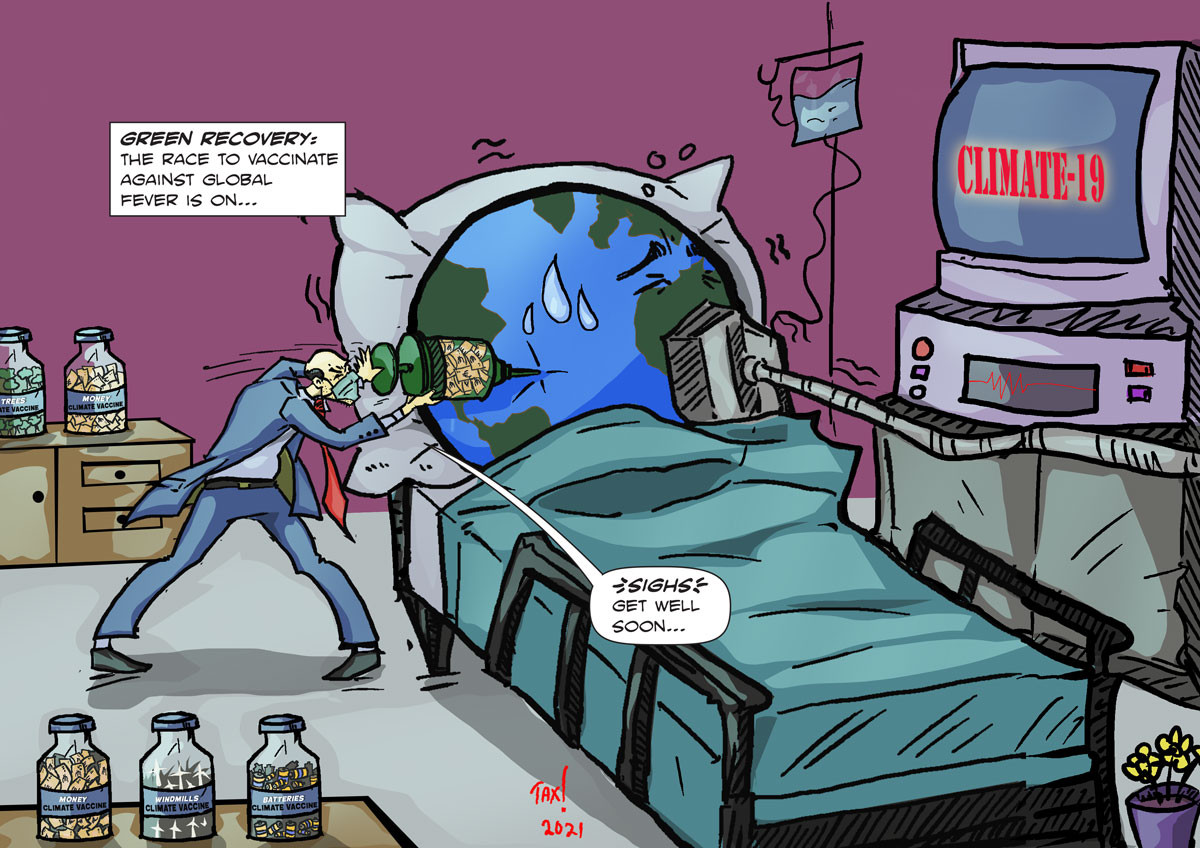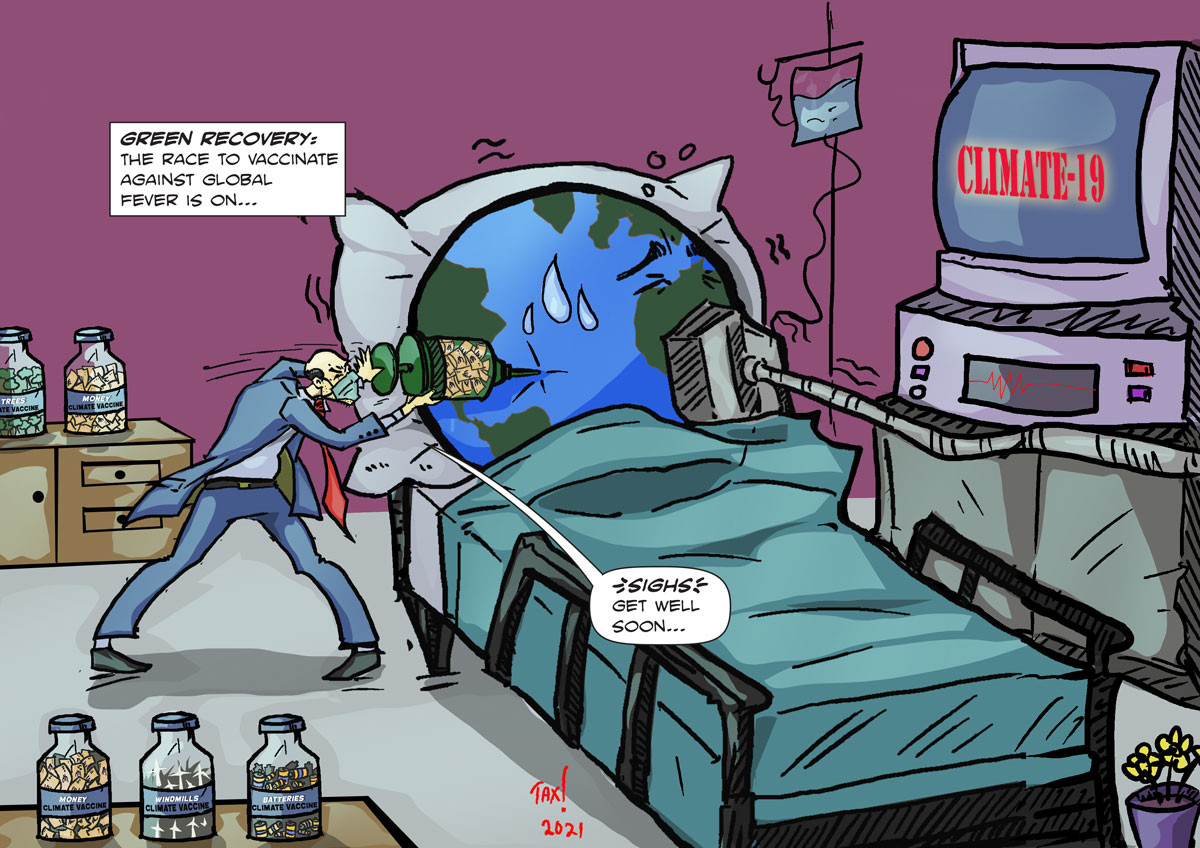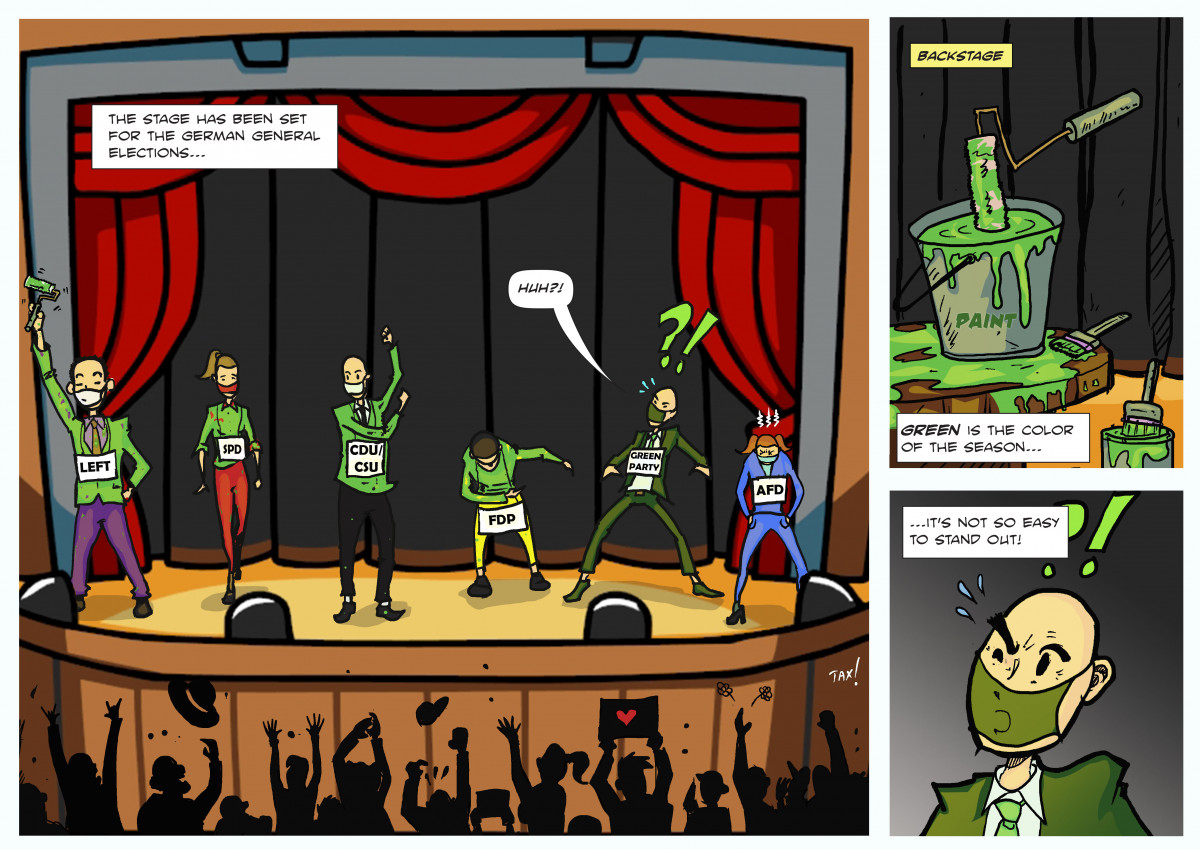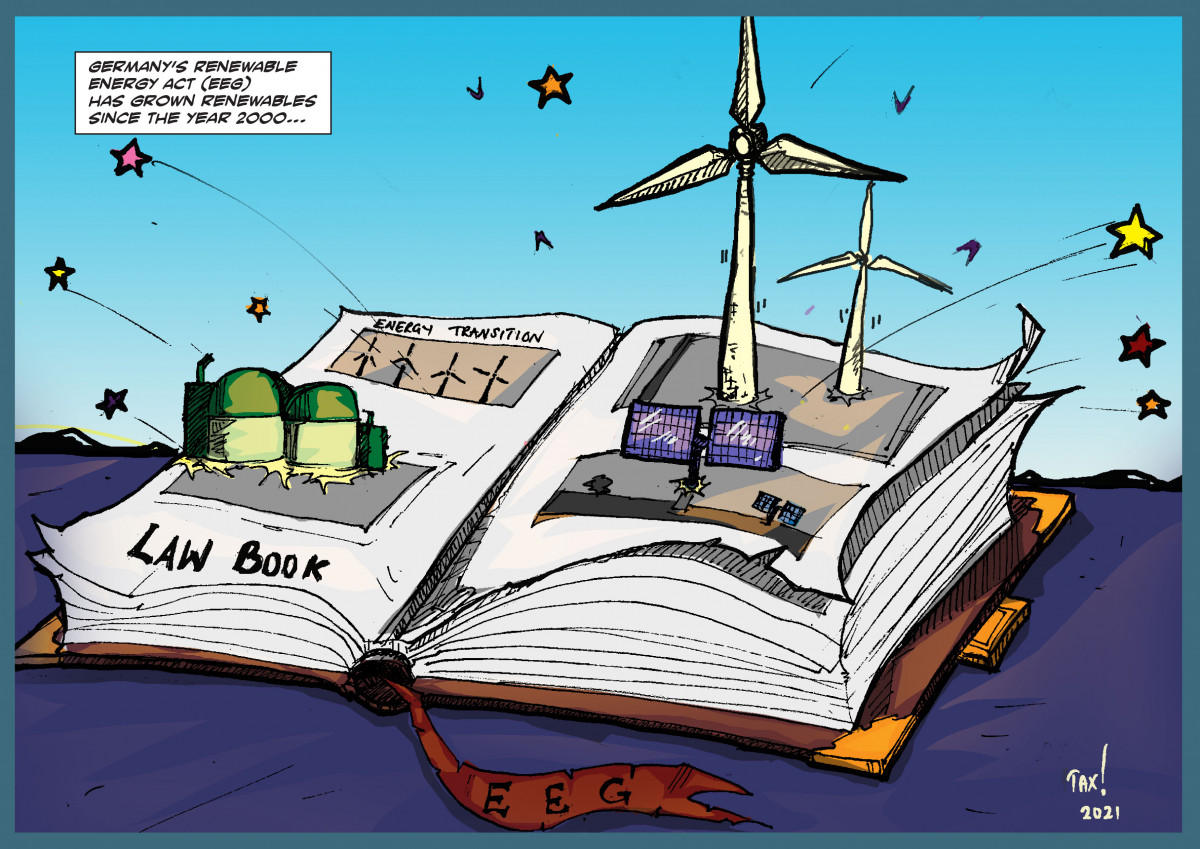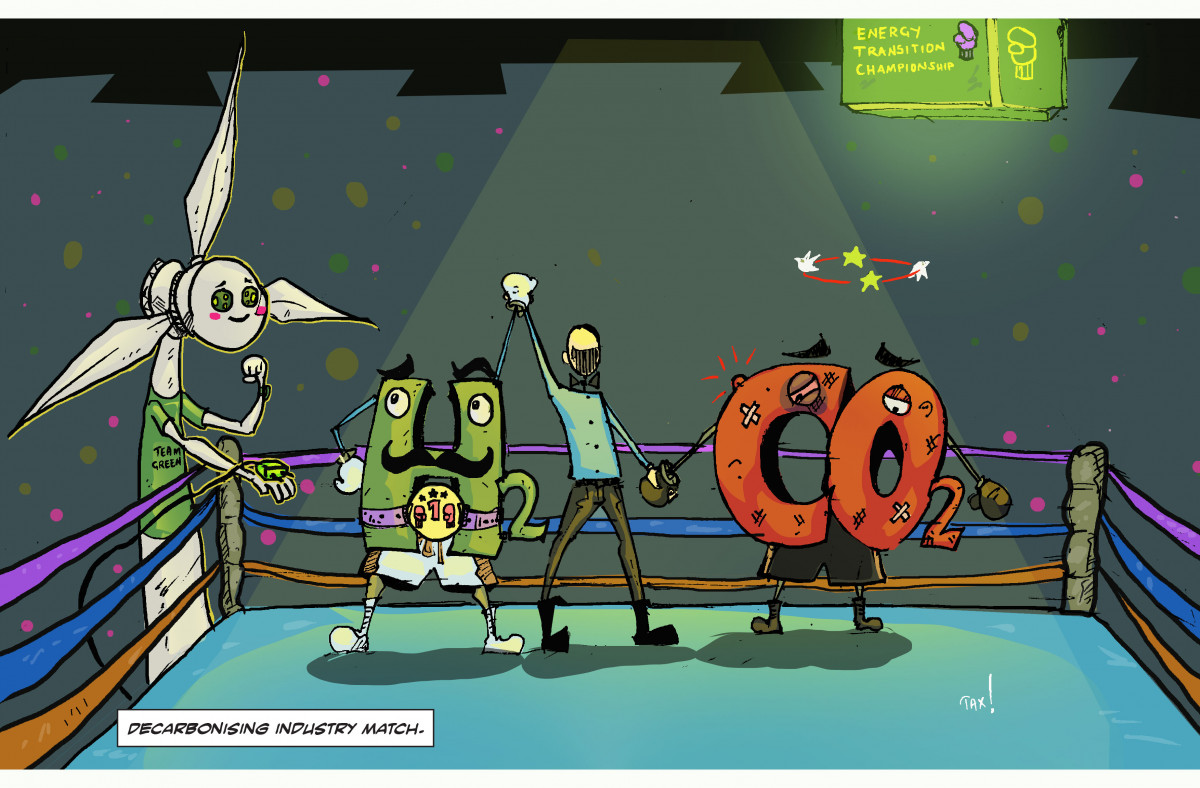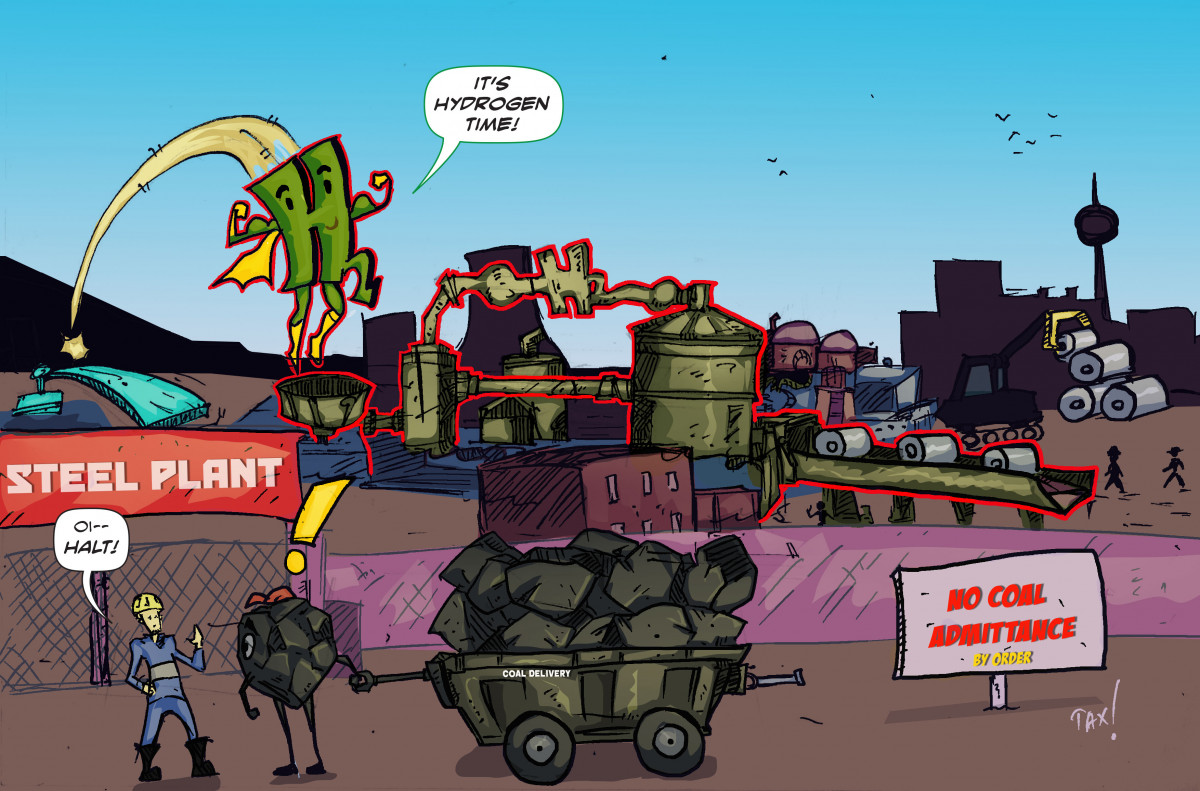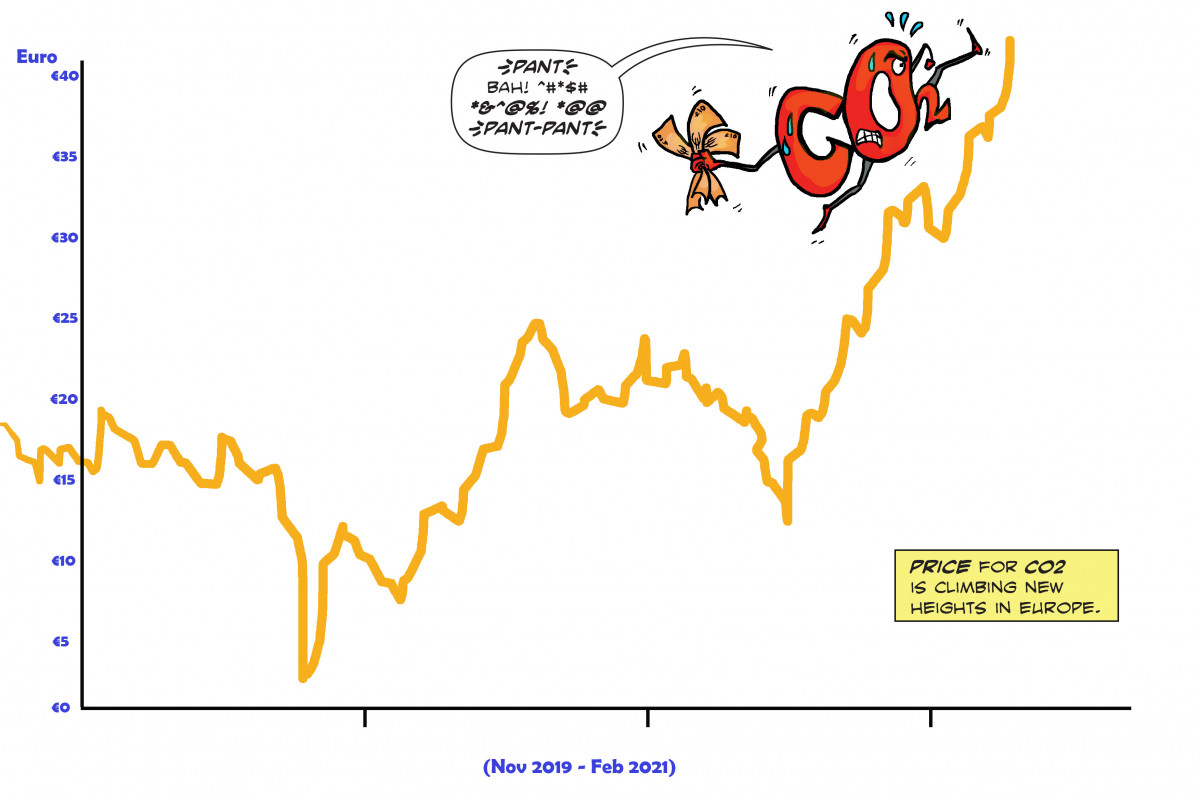Cartoon-snapshot of what’s hot in energy and climate
Can green stimulus programmes help to cure Earth of the heating disease?
Earth is sweating, and has difficulties breathing – so to speak. If preventative measures against global heating aren’t applied soon, there is no way the temperature increase will be limited to 2°C -- let alone 1.5°C, the Intergovernmental Panel on Climate Change (IPCC) has said in its latest report. Many countries around the world have pledged to “build back better” by using COVID-19 recovery funds with the climate in mind. But so far neither Germany’s green stimulus plans nor the combined recovery pledges by 50 leading economies are showing enough focus on climate change mitigation.
It’s the super-election year in Germany – and suddenly so many major parties appear “green”
Campaigning for Germany’s general elections in September 2021 has entered its very hot phase, and climate – despite the pandemic and another refugee crisis looming – has taken centre stage. The debate is largely focusing on the renewables expansion, the end of the combustion engine and the costs and sacrifices that reaching climate neutrality by 2045 will bring – and of course an earlier coal exit. Climate activists have taken to the streets again and the Green Party is predicted to do well – as well as the two (formerly) large competitors for the majority, the Social Democrats (SPD) and the conservative CDU-CSU union. So has an ambitious climate policy become mainstream? Or do other parties just want to have some of that green colour rub off on them, since it seems to appeal to voters? Only the coalition agreement of the next government will show.
Growing renewables by the book
Renewable power technologies such as wind turbines, solar PV panels and biogas plants have reshaped Germany’s power mix to the degree that 46 percent of electricity demand was covered by renewables in 2020 – and what made it happen? The Renewable Energy Act (EEG). The law that introduced feed-in tariffs for renewable power producers turned 20 years old in 2020 and is so far going strong, although many changes to the way renewable installations can get their funding have been made in the meantime. But since the latest 2021 reform, all parties are calling for a change in EEG funding (not via peoples’ power bills but from the state budget) and the view of many conservative and liberal energy politicians is that renewables should be made even more market ready. So more serious changes to the book of renewables may be in hand. The EEG's fate is connected to multiple other important issues: the issue of increasing electricity demand due to new power guzzlers such as e-cars and heat pumps; slow additions of wind power capacity, thanks to critical citizens and red-tape in planning procedures, and the soon inevitable change in Germany’s system of taxes and levies on energy to make it aid rather than hamper the transition to a fully renewable power system.
- What's new in Germany's Renewable Energy Act 2021
- German election primer - Faster renewables expansion vital for next government's climate policy
And the winner is… hydrogen!
Eight months into 2021 and the hydrogen buzz is not letting up. As fossil fuels such as coal, oil and gas are no longer feasible options in a net-zero emissions world (even in the heavy industry) using green hydrogen made with renewable electricity is the German government’s favourite solution. But how soon will the to-date little tested and highly expensive technology be able to punch coal out of the ring and lose its right of admission to the country’s steel factories? New projects, turning former coal plant sites into hydrogen hubs and bundling funding and know-how from energy providers, grid operators and industry seem to spring up by the minute. As are funding announcements and bilateral agreements between Germany and other countries. Join us in following this development, including its inevitable highs and lows.
- Hydrogen push ignites next stage of Germany's energy transition
- German government's 'steel strategy' aims to secure climate-friendly production
- Germany’s future hydrogen needs significantly higher than expected – report
Buyers of emission allowances, e.g. fossil power plants are getting a sweat on
Germany has set the planned phase-out date for coal power to 2038 – much too late to meet climate targets and rejig the country’s power system to run on renewables entirely, many critics say. But chances are, they need not worry: the price of carbon emission allowances under the EU’s carbon trading scheme (EU ETS) has seen an unprecedented hike (up a very steep mountain) since the middle of last year, reaching a new high of 60 euros per tonne of CO2 in August 2021 and making the burning of coal in power stations more and more expensive. In fact, a switch from lignite and hard coal plants to using more gas-fired power stations has been attributed to the higher cost of CO2 and helped reaching Germany’s climate targets in 2020. NGOs used to say that a carbon price of around 50 euros was necessary to achieve real change in the energy sector. But even market experts are unsure about the longevity of high carbon prices. And new challenges for the EU ETS are ahead as the EU is striving to use it as one of its major goal getters in the European Green Deal, a higher 2030 climate target and in reaching climate neutrality by the middle of the century. Just some of the questions thrown into the mix: Will transport and heating fuels join the ETS club? How exactly will a carbon border adjustment mechanism be connected to the emission trading scheme?



